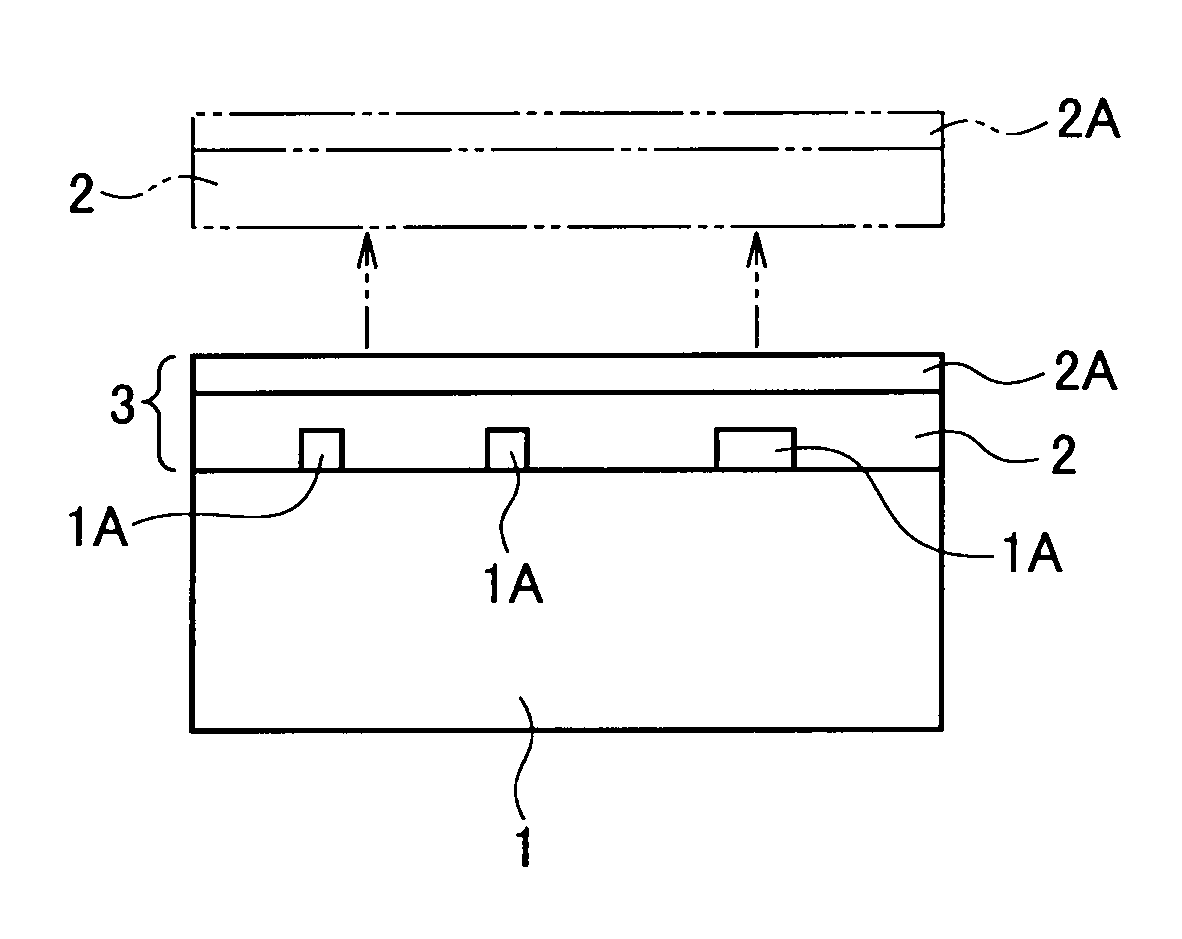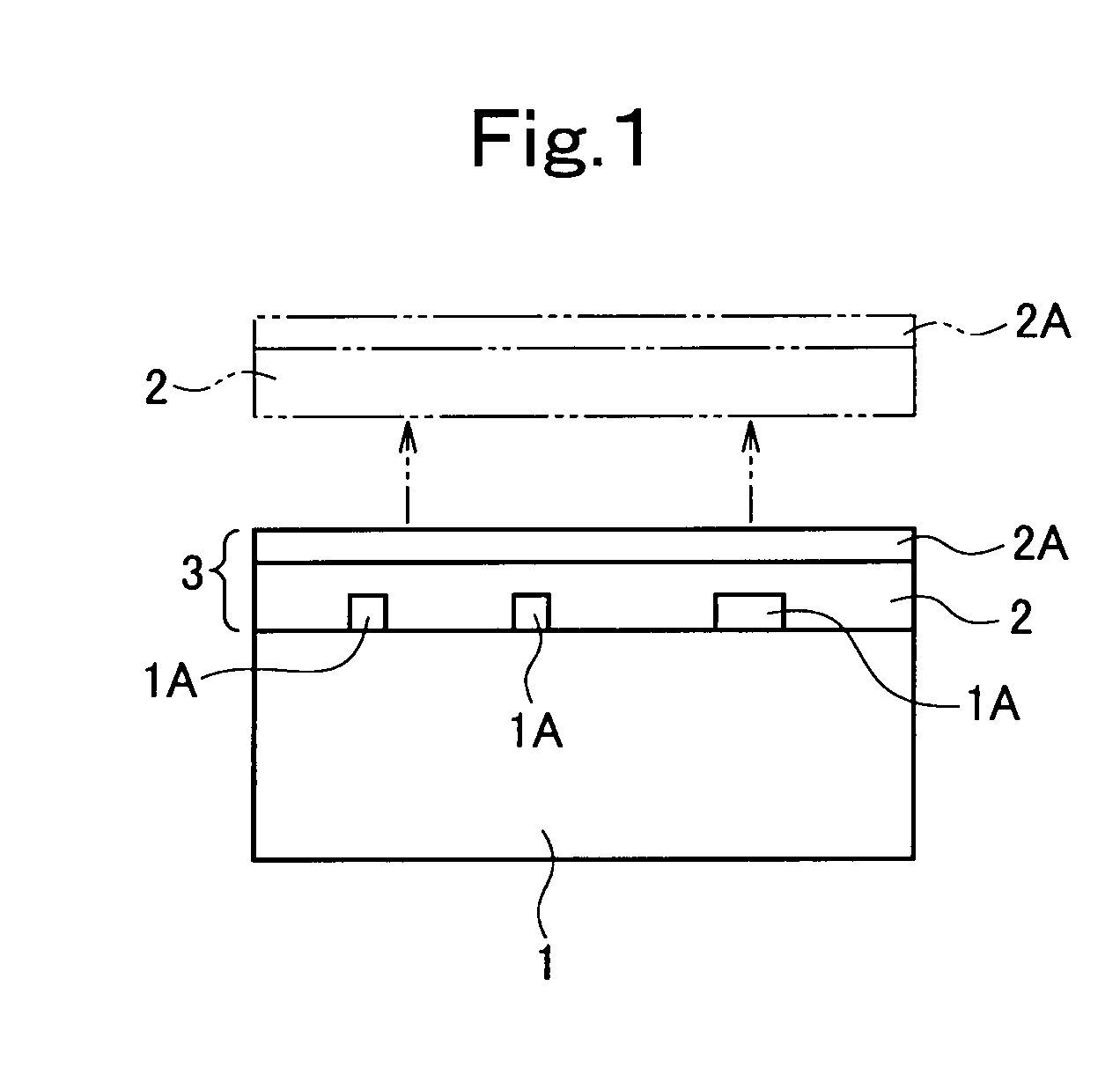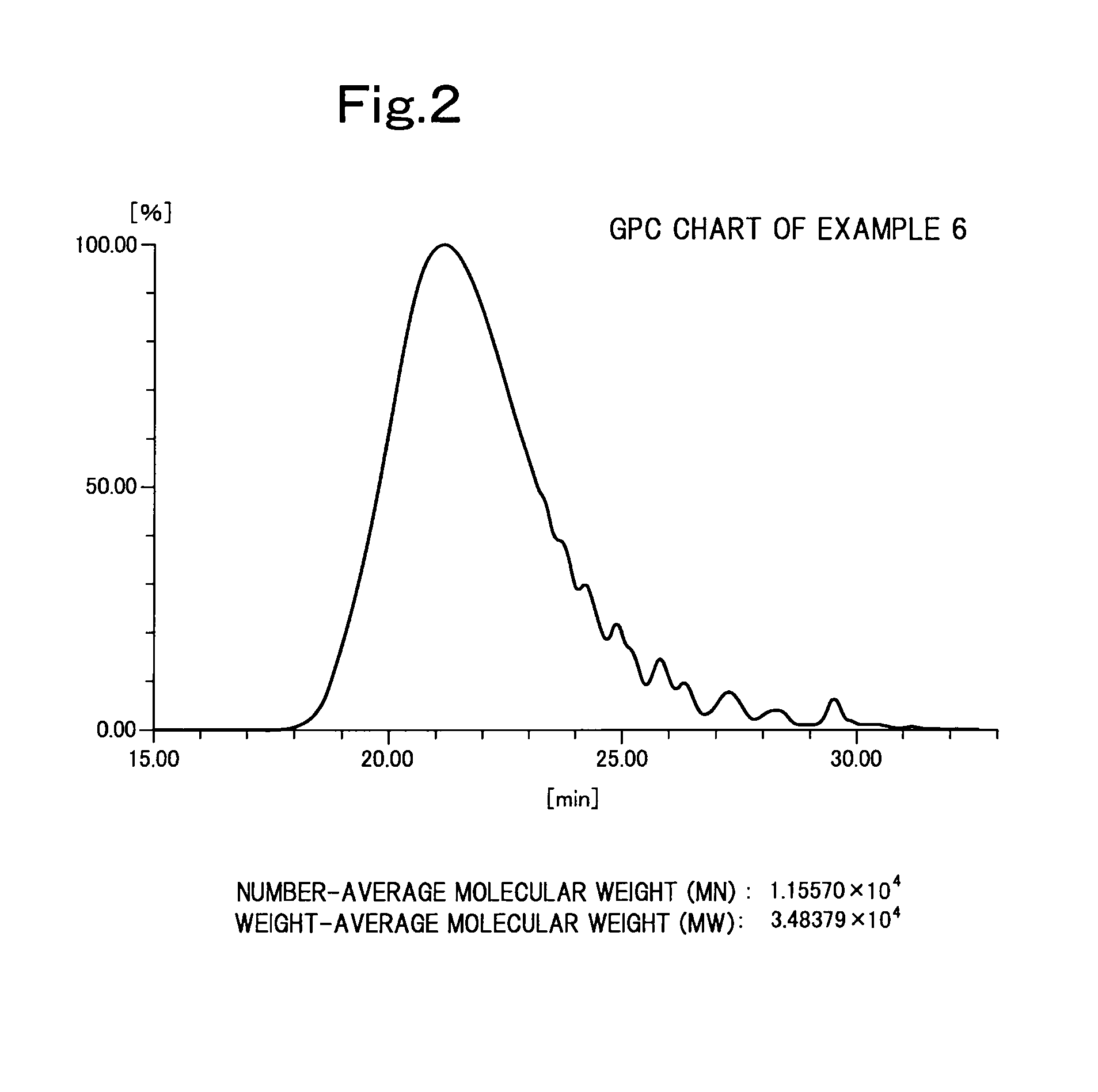Soluble imide skeleton resin, soluble imide skeleton resin solution composition, curable resin composition, and cured product thereof
a technology of imide skeleton and soluble imide skeleton, which is applied in the direction of synthetic resin layered products, non-conductive materials with dispersed conductive materials, conductive materials, etc., can solve the problem of insufficient processability, low linear expansion coefficient of polyimide resin, and inability to achieve linear expansion as low as that of polyimide resin, etc. problem, to achieve the effect of high heat resistance, low linear expansion coefficient, and high solubility
- Summary
- Abstract
- Description
- Claims
- Application Information
AI Technical Summary
Benefits of technology
Problems solved by technology
Method used
Image
Examples
example 1
[0194]A 2-L three-neck flask equipped with a thermometer, a stirrer, and a condenser was charged with 45 g of an imide skeleton phenol compound represented by the structural formula (10-3), 149 g of bisphenol A, 620 g of epichlorohydrin, 241 g of 2-propanol, and 90 g of water and was heated to 50° C. to dissolve the mixture. 141 g of 48.5% by weight aqueous sodium hydroxide was added dropwise to the mixture over one hour. During the dropping, the flask was gradually heated. When the dropping was completed, the temperature in the system reached 70° C. The temperature was then held at 70° C. for 30 minutes to continue a reaction. After the completion of the reaction, the product was washed with water to remove a by-product salt and excessive sodium hydroxide. Excessive epichlorohydrin and 2-propanol were then evaporated from the product under reduced pressure to yield a crude epoxy resin.
[0195]The crude epoxy resin was dissolved in 410 g of methyl isobutyl ketone, to which 7 g of 48.5...
example 2
[0196]A 2-L three-neck flask equipped with a thermometer, a stirrer, and a condenser was charged with 75 g of an imide skeleton phenol compound represented by the structural formula (10-4), 120 g of bisphenol A, 550 g of epichlorohydrin, 241 g of 2-propanol, and 80 g of water and was heated to 50° C. to dissolve the mixture. 125 g of 48.5% by weight aqueous sodium hydroxide was added dropwise to the mixture over one hour. During the dropping, the flask was gradually heated. When the dropping was completed, the temperature in the system reached 70° C. The temperature was then held at 70° C. for 30 minutes to continue a reaction. After the completion of the reaction, the product was washed with water to remove a by-product salt and excessive sodium hydroxide. Excessive epichlorohydrin and 2-propanol were then evaporated from the product under reduced pressure to yield a crude epoxy resin.
[0197]The crude epoxy resin was dissolved in 400 g of methyl isobutyl ketone, to which 7 g of 48.5...
example 3
[0198]A 2-L three-neck flask equipped with a thermometer, a stirrer, and a condenser was charged with 20 g of an imide skeleton phenol compound represented by the structural formula (10-5), 167 g of bisphenol A, 640 g of epichlorohydrin, 250 g of 2-propanol, and 90 g of water and was heated to 50° C. to dissolve the mixture. 146 g of 48.5% by weight aqueous sodium hydroxide was added dropwise to the mixture over one hour. During the dropping, the flask was gradually heated. When the dropping was completed, the temperature in the system reached 70° C. The temperature was then held at 70° C. for 30 minutes to continue a reaction. After the completion of the reaction, the product was washed with water to remove a by-product salt and excessive sodium hydroxide. Excessive epichlorohydrin and 2-propanol were then evaporated from the product under reduced pressure to yield a crude epoxy resin.
[0199]The crude epoxy resin was dissolved in 410 g of methyl isobutyl ketone, to which 7 g of 48.5...
PUM
| Property | Measurement | Unit |
|---|---|---|
| glass transition temperature | aaaaa | aaaaa |
| glass transition temperature | aaaaa | aaaaa |
| epoxy equivalent weight | aaaaa | aaaaa |
Abstract
Description
Claims
Application Information
 Login to View More
Login to View More - R&D
- Intellectual Property
- Life Sciences
- Materials
- Tech Scout
- Unparalleled Data Quality
- Higher Quality Content
- 60% Fewer Hallucinations
Browse by: Latest US Patents, China's latest patents, Technical Efficacy Thesaurus, Application Domain, Technology Topic, Popular Technical Reports.
© 2025 PatSnap. All rights reserved.Legal|Privacy policy|Modern Slavery Act Transparency Statement|Sitemap|About US| Contact US: help@patsnap.com



